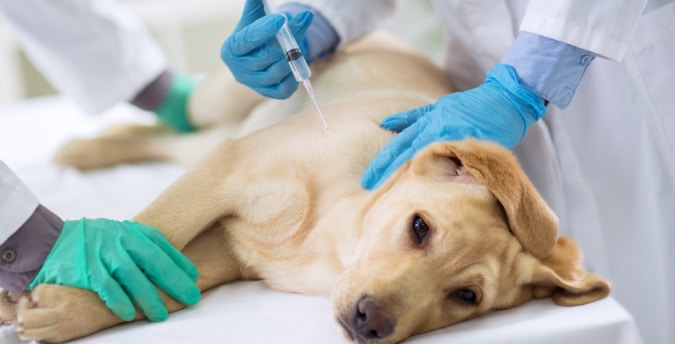Acepromazine for Dogs

Is your dog suffering from anxiety whenever it hears thunder or fireworks? Does your dog have motion sickness? If you answered yes to any of these questions, then you might be looking for certain medications to help with your dog’s problems.
Acepromazine is a sedative that can be used for dogs that have anxiety or anxious reactions to such events. It may also be used to help your pet recover from a recent surgery or before certain medical procedures to help calm it.
If your dog is suffering from anxiety that may already need sedation, then you might want to consider this medication. However, as a pet owner, you should be aware of what potential side effects may happen once you use this type of medication. Below are some of the things you should know if you are considering giving Acepromazine to your dog:
WHAT IS ACEPROMAZINE?
Acepromazine is a form of tranquilizer medication that is usually used on dogs or prescribed on dogs that have anxiety, along with the following conditions:
- Pre or post-surgery for your pet dog (for post-surgery, it treats nausea and helps with recovery)
- Aggression and other stressful situations like sensitivity to loud noises
Nonetheless, as much as how useful the drug may be, it also has its own set of side effects and risk factors.
POSSIBLE SIDE EFFECTS OF ACEPROMAZINE ON DOGS
While Acepromazine is approved by the FDA, each dog breed may react differently to the medication. The following breeds are much more sensitive to the drug, and if you are planning to give it to them, then a lower dosage is advisable:
- Collie breeds and the Australian shepherd
- Boxers and other big breeds like the Great Dane and Newfoundland
- Greyhounds
Below are also some of the most commonly known side effects of Acepromazine on dogs:
- It may lower your dog’s blood pressure and lower heart rate
- It may also lead to difficulty in breathing
- Your dog may have trouble balancing when walking
- Pale gums and increased sensitivity to noise
- If your dog is epileptic, then it may also make its seizures much worse as well
- Your dog may be allergic to the drug (lookout for symptoms of swelling, and trouble breathing)
If you encounter any of these side effects on your pet, you should consult your veterinarian right away.
BE AWARE OF THESE RISKS
You should also tell your veterinarian about your pet’s medical history before using this medication on them. The side effects associated with it can be made worse if your pet has the following health conditions:
- If your dog is epileptic (it may contribute to your pet having more seizures)
- If your dog has a heart disease condition (your pet’s heart will need to work harder if the blood pressure of your pet is low, and puts an extra strain on it)
PREVENTING EAR INFECTIONS
Dogs can be susceptible to ear infections, especially if various elements or objects get into your pet’s ears. This can also happen if your pet’s ears aren’t cleaned or taken care of properly. Ear mites or yeast infections also cause ear infections as well. If your dog gets an ear infection and it isn’t treated quickly, it can potentially lead to hearing loss. Make sure you check your dog’s ears regularly and check for signs or indications of inflammation or possible ear infections. Below are some tips on how to properly take care of your dog’s ears:
- Make sure to use good-quality ear cleaning or cleansing solutions
- Don’t insert earbuds into your dog’s ear canal as this may lead to ear damage
- Trim your pet’s ear hair and make sure to do it properly to prevent any injuries
- Keep your pet hygienic, and free from various parasites like ticks, fleas, or ear mites so as not to increase your pet’s susceptibility to ear infections
DOSAGE OF ACEPROMAZINE
You should ask your veterinarian and take note of what he or she says about the amount of dosage you need to give your pet. Usually, the dosage of Acepromazine depends on the kind of breed your dog is. Dog’s are typically given less than one milligram of Acepromazine, and this can also depend on your dog’s body weight as well. The drug is given before any stressful event might occur on your pet because it takes approximately forty-five minutes to work, and it won’t be effective if your pet is already suffering from anxiety
